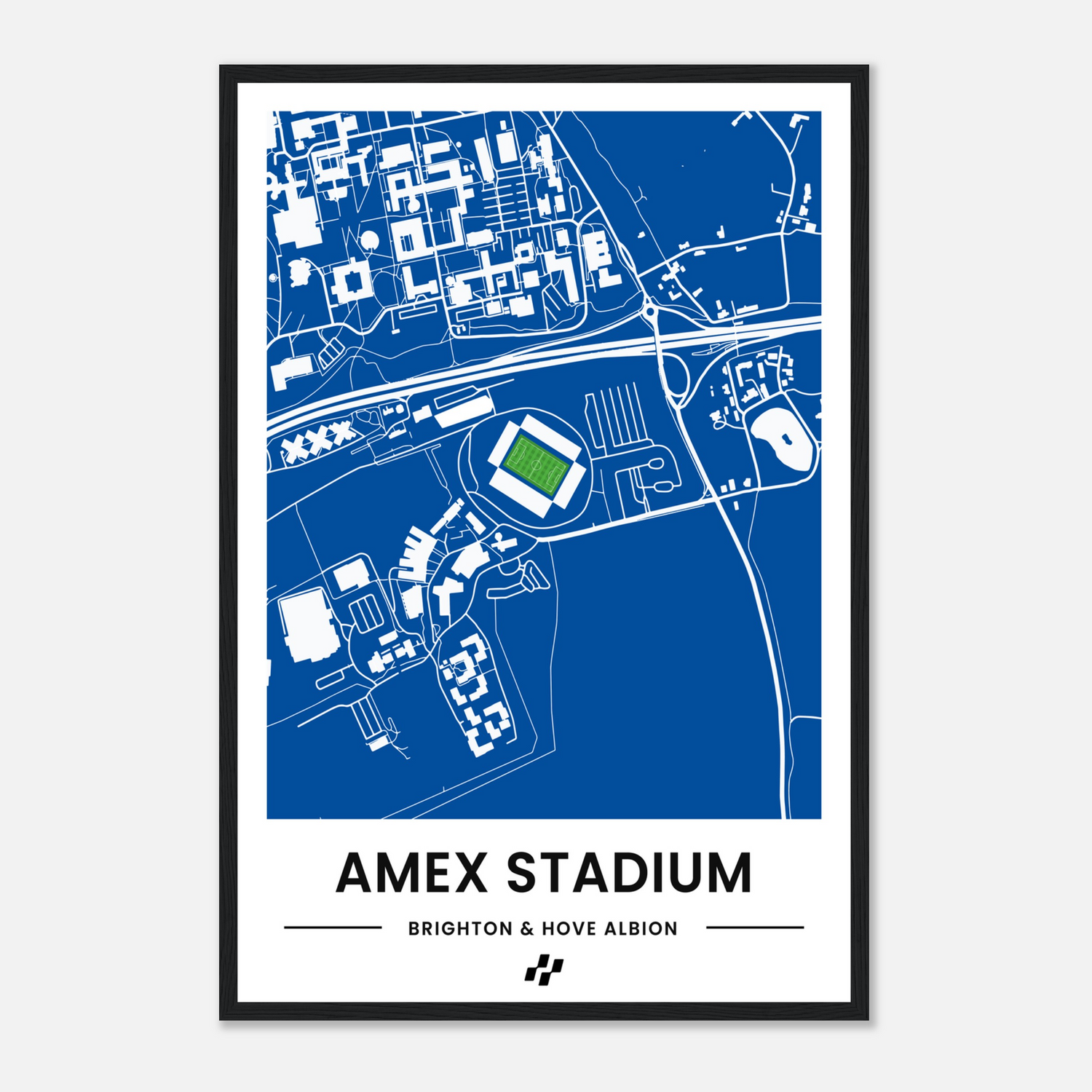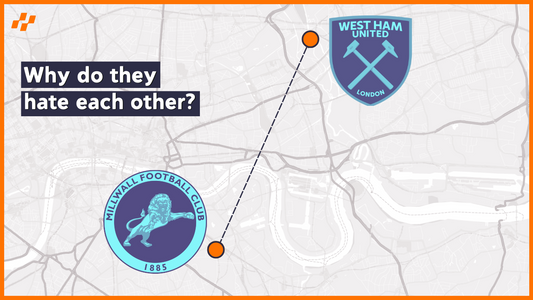
First World Cup 1930: What Really Happened?
Share
The World Cup, a spectacle unlike any other, full of the best players and countries competing to be crowned champions of the world, but the tournament isn’t without controversy, particularly the first World Cup in 1930.
The refs wore suits, one team missed their boat, and the Romanian team was selected by theIr King. That's only the mild stuff.
From premature funerals to mass brawls, we look at what really happened at the first World Cup. But first, let’s go even further back in history at how the World Cup was born.
Click here to watch the full video on our YouTube channel
How the World Cup was born
On 22 May 1904, the International Federation of Association Football, also known as FIFA, was founded in Paris, comprising football associations from France, Belgium, Denmark, the Netherlands, Spain, Sweden, and Switzerland. FIFA was created to govern football and promote the sport worldwide.
The organisational Statutes of FIFA include developing association football globally, ensuring it is accessible to all, and advocating for integrity and fair play (which is questionable).
As football grew in popularity, it was contested as an IOC-recognized Olympic sport at the Summer Olympics of 1900 and 1904, before becoming an official FIFA-supervised Olympic competition at the Summer Olympics of 1908.
The Football Association, England's football governing body, organised the event, which was regarded suspiciously as a show rather than a competition. The gold medals were won by Great Britain (represented by the England national amateur football team). They repeated the feat at the Stockholm Summer Olympics in 1912.
FIFA attempted to organise an international football tournament in Switzerland outside of the Olympic framework in 1906. The competition is described as a failure in FIFA's official history.
With the Olympic event still being contested only by amateur teams, Lipton Tea founder Sir Thomas Lipton organised the Sir Thomas Lipton Trophy tournament in Turin in 1909. The tournament was a competition between individual clubs (not national teams) from various countries, each of which represented an entire nation. The competition is sometimes described as The First World Cup.
In 1914, FIFA agreed to recognise the Olympic tournament as a "world football championship for amateurs", and took responsibility for managing the event. This paved the way for the world's first intercontinental football competition for nations, which took place at the 1920 Summer Olympics and won by Belgium.
Uruguay went on to win the following two Olympic football tournaments in 1924 and 1928. These were also the first two open world championships, as 1924 marked the beginning of FIFA's professional era, and are the reason Uruguay is allowed to wear four stars on their kits.
After football was dropped from the program for the 1932 Olympics in Los Angeles, because the sport was not popular in the United States, FIFA President Jules Rimet set about to organise the inaugural World Cup tournament. With Uruguay now two-time official world champions and due to celebrate their centenary of independence in 1930, FIFA named Uruguay as the host country. As a result, the World Cup as we know it was born.
The fact that the first World Cup was awarded to South America to begin with did not sit well with Europe and almost derailed the tournament before a ball was even kicked.
Due to the European economic depression at the time, many European players were either unable or unwilling to attend the tournament, fearing that their day jobs would no longer exist when they returned. As a result, some of Europe's most accomplished teams, including three-time Olympic gold medallist England, and football enthusiasts Italy, Spain, Germany, and Netherlands, declined to compete in the first ever World Cup.
Uruguay even offered to pay for all travel and hotel expenses for visiting teams, but the prospect of making the long boat ride — a three-week journey across the Atlantic Ocean for European teams at the time — discouraged them from coming. There was no commitment from any European nation to play in the World Cup two months before it was scheduled to begin.
Finally, FIFA president Jules Rimet stepped in and was able to convince Belgium, France, Romania and Yugoslavia to make the trip. In Romania, King Carol selected the team members himself, gave them a three-month vacation from their jobs and guaranteed the players would be employed when they returned and also took the team home via a leisurely tour of New York. The Europe boat then picked up Brazil en route.
With the addition of Uruguay, Argentina, Paraguay, Chile, Bolivia, Peru, Mexico, and USA, this made a total of 13 teams to compete in the first ever World Cup.
Boat Trip to Uruguay
On 21 June 1930, shortly before the first World Cup in Uruguay was due to begin, The Conte Verde boat set sail from Genoa heading for South America, with the Romania national team on board. The boat stopped in Villefranche-sur-Mer to pick up the French squad, three referees (there were 15 referees in total at the tournament, eleven from the Americas – among them six Uruguayans), and a group of officials, including FIFA president Jules Rimet, who packed the trophy in his suitcase. They were joined in Barcelona by the Belgians, and then in Rio de Janeiro by the Brazilian delegation before arriving in Montevideo on July 4th. The journey took just over a fortnight in total.
Only Yugoslavia travelled from Europe alone because the Conte Verde was fully booked by the time they decided to attend the World Cup. Instead, after a three-day train journey, they set sail from Marseille on the pleasure cruiser Florida. Egypt, the only African representative, was supposed to join them, but their boat from Africa was delayed by a storm, and the Florida left without them. They cabled their apologies and the tournament continued with an awkward 13 teams. The Mexico squad, meanwhile, sailed from Veracruz via Havana to New York in order to join the Americans on the SS Munargo. The USA coach, the former Celtic player Robert Millar, forced his players to train on board the top deck.
Tournament Format
Unlike today where teams compete to qualify, the first World Cup was by invitation only. The 13 teams were divided into four groups: Group 1 consisted of Argentina, Chile, France and Mexico; Group 2 saw Yugoslavia grouped with Brazil and Bolivia; Uruguay competed in Group 3 alongside Romania and Peru, while Group 4 was made up of the U.S., Belgium and Paraguay. The four Group winners advanced directly to the semifinals.
Controversies
Going into the tournament, Uruguay and Argentina were the overwhelming favourites, while France and the United States also fielded competitive sides.
The Argentinians sparked the most controversy during the tournament and quickly established themselves as the bad boys. On the night of 14th July their players were kept awake by members of Montevideo’s large French population, celebrating Bastille Day.
On the 15th they played France in their first match, and took their frustration out on them: in the opening exchanges, Argentina’s Luis Monti – the first and only man to play in two World Cup finals for two different nations, also turning out for Italy in 1934 – fouled France’s Lucien Laurent, who spent the rest of the match hobbling around to little purpose.
Then the French goalkeeper, Alex Thépot, was taken ill leaving France to cling on with nine men, until the 81st minute, when Monti scored direct from a free-kick. But the most controversial incident came towards the end of the match when the France winger Marcel Langiller ran clear on goal, apparently certain to score, and the referee blew the final whistle.
It was controversial because only 84 minutes had been played. The official – later brought the sides back out to complete the match, France ultimately losing 1-0 to Argentina.
Their second match, a 6-3 win against Mexico, was refereed by Ulises Saucedo, the Bolivian team coach, who awarded five penalties. Guillermo Stábile, playing only because Argentina’s first-choice striker and captain, Manuel Ferreira, had gone home to sit a law exam, scored a hat-trick on his international debut (he would be the tournament’s top scorer, but never played for his country again).
Argentina’s third group game, against Chile, featured an ugly mass brawl prompted, inevitably, by Monti, and eventually broken up by the police. Stábile scored twice in a 3-1 win but, by the time they qualified for the semi-finals, Argentina were so unpopular their team’s hotel required round-the-clock police protection.
The Final and Aftermath
After beating Belgium, the United States beat Paraguay to set up a semi-final match with Argentina, which they lost 6-1. But things really got ugly, A first half horror tackle left one of their opponents with a broken leg, and the game descended into a mass brawl. An Argentine player knocked four teeth out of an American's mouth, and another ended up in hospital with injuries to his stomach.
There was a moment of pure slapstick when the American medical attendant advanced towards the referee to give him a piece of his mind, and in the process of remonstrating, threw his medical bag to the ground causing some breakage of the bottles inside. As the smell of chloroform rose up, the medical attendant was overcome by the fumes and had to be helped off the pitch!
The other semi-final also ended 6-1, Yugoslavia – exceeding all expectations by getting so far, with the average age of their young squad just 21.7 years – scored in the fourth minute before being outclassed by the hosts, Uruguay, one of whose goals came after the ball had gone out of play and been hoofed straight back in by a helpful policeman without any of the officials noticing.
On July 30th 1930, the final was between the two great rivals, Uruguay and Argentina in a repeat of the Olympic final of 1928. 90,000 tickets were sold, but it is likely that there were more fans than that in the stadium.
Prior to the match there was a dispute over which team should provide the match ball. Eventually FIFA intervened and decided that the first half would be played with a ball provided by Argentina whilst in the second a Uruguayan ball would be used.
Uruguay prevailed 4-2 despite trailing 2-1, and Jules Rimet stepped up to present the trophy. Uruguay were worthy winners, and a national holiday was declared, with each team member given a house.
However, Argentina took the defeat very badly. An Argentine crowd stoned the Uruguayan consulate in Buenos Aires, and complained of Uruguayan brutality and unfair refereeing, slightly hypercritical. Argentina broke off football relations with Uruguay and only played in Italy in the 1934 World Cup when Uruguay declined to take part in response to Italy’s refusal to travel in 1930.
For the Europeans, another marathon journey awaited, one that did not pass without drama. One of the Romanians, Alfred Eisenbeisser Feraru, was taken ill during the transatlantic voyage, diagnosed with pneumonia.
The team continued their journey, but when they arrived back in Bucharest without him, a rumour spread that he had died. Even his distraught mother was convinced, and she made funeral arrangements, only for Feraru to walk through the door on the day of the wake. She fainted on the spot. Still, it wasn't all bad. Feraru recovered to compete for Romania in both figure skating and bobsleigh at the next Olympics.
The first World Cup tournament paved the way for what is now one of the world's most watched sporting events. Setting a standard for excitement, controversy, and intrigue ever since.





